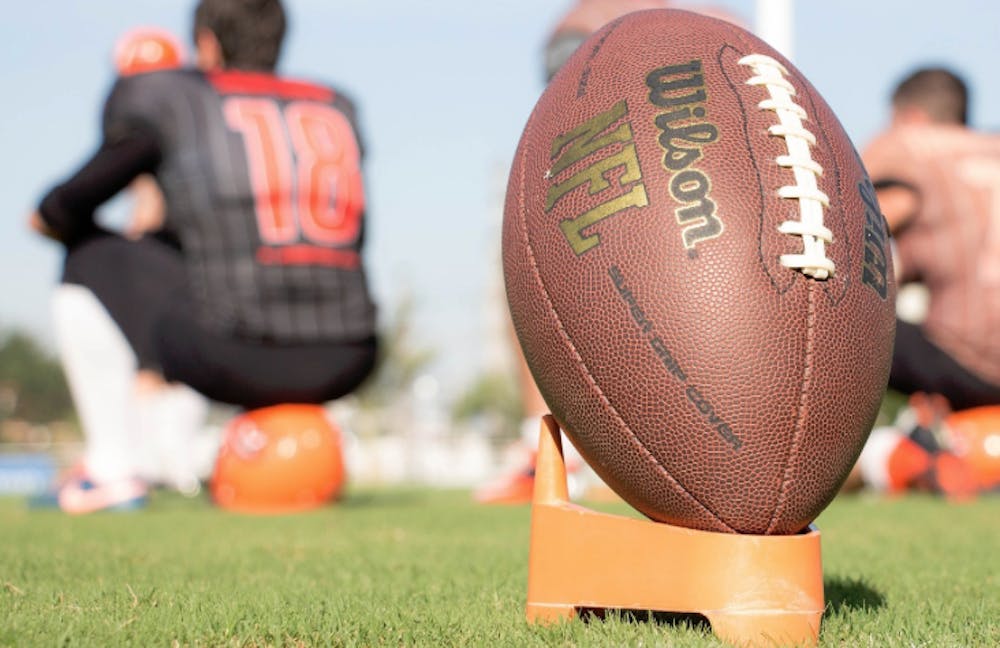It is not that NFL players only run or lift heavy; they drill with merciless accuracy to achieve quantifiable benefits on the field. Each rep and sprint is counted, and each weakness is worked on. Raw power and burst speed plans are developed by coaches wherein the players are given the advantage of a split-second play. It's all about transferring what you do in the gym to game day, where milliseconds make or break millions.
Explosive Weight Training
NFL strength programs involve intense lifting to produce the highest power. The type of force that pushes the defenders back is what the players concentrate on, moves such as power cleans, snatches, and heavy squats. Coaches require the ideal form that will limit the risk of injury and maximize the output. Monitoring load, speed, and reps will enable athletes to continue creating new personal bests.
Coaches combine velocity-based training with accurate feedback on bar velocity, ensuring that all lifts are purposeful. This method develops the raw strength required in each block, tackle, and burst off the line. Even fans studying online betting sites understand that an excellent strategy can be used to turn the tide of a game. It is a detail that professional gamblers consider when evaluating the physical advantage of a team.
Sprint-Focused Drills
Straight-line speed is a necessity; however, NFL training splits it into easy-to-understand, focused aspects. The coaches design drills that practice the particular elements of a sprint, ensuring the players propel off the line quickly and do not take unnecessary steps:
- Short acceleration runs: quick 10-20-yard sprints to practice the explosiveness of the first step.
- Top-speed sprints: flying runs that enhance top speed without increasing inefficient mechanics.
- Measured 40-yard dashes: timed activities to track progress and adjust the training effort.
Laser timing and video breakdown provide athletes with regular feedback to correct their technique as soon as possible. Every sprint session is meant to offer advantages in real games, such as beating coverage or making a tackle.
Integrated Power and Agility Workouts
NFL training is a mixture of unbridled power and the ability to move. Such exercises compel sportsmen to respond, shift, and explode in a moment. Coaches evaluate every rep to ensure gym work translates to real-game action, just as online casino real money players demand reliable strategies. The objective is to produce players who are balanced at high speeds and can use power without hesitation.
Plyometrics for Quick Reaction
To practice lower-body force production, players pound out box jumps, lateral bounds, and depth drops. To simulate on-field cuts, coaches require quick ground contact times. Drills are brief and intense, pushing the limits to the maximum, but they do not compromise technique. To determine the actual progress, athletes monitor the height and speed of each jump.
The objective is straightforward: produce explosive power that can be converted into instant, game-ready movement. A linebacker is required to change directions in a split second to cover a gap. Breaking a route, a wide receiver should not lose his speed. Plyometric training prepares muscles and tendons to provide a momentous response in a moment of pressure.
Resisted Sprints for Acceleration
To overload the start mechanics, athletes pull sleds or put on resistance bands. This develops raw drive phase power that they can apply to get around coverage or make up space on the defensive side of the ball. Coaches assign specific weights to challenges without compromising shape. Drills are brief, repetitive, and quantifiable, allowing for easy recording of improvement.
Sessions are about strong start-ups and transitioning to full speed. Force production and sprint mechanics at a load are enhanced using resisted sprints. It is the way the players practice to win those key one-on-one battles in seconds.
Nutrition Tailored for Recovery
NFL players consult nutritionists to achieve precise macros that help repair their muscles. Foods contain lean proteins to rebuild tissue, complex carbohydrates to restore glycogen, and electrolytes to balance fluid levels. The time of the day is a factor, and therefore, the post-workout shakes usually come minutes after the training session has ended. Maintaining hydration is monitored at all times to prevent cramping and fatigue.
Recovery eating has nothing to do with fad diets; it is designed to have the players train hard throughout the week. Foods that are anti-inflammatory, such as berries and fatty fish, alleviate soreness. Supplements are selected to be safe and beneficial to the immune system and joint strength without facing banned substances. The idea is not to have one great game and then spend time recovering from an injury.
Mental Conditioning Strategies
NFL teams spend on concentration training: visualization practice, watching films as part of practice, and breathing exercises to calm down. Players practice scenarios in their minds to predict what they will do and remain focused under pressure. These strategies provide them with the advantage of skimming plays and making last-minute decisions that determine the games.
This post is provided by a third party who may receive compensation from the products or services they mention.


